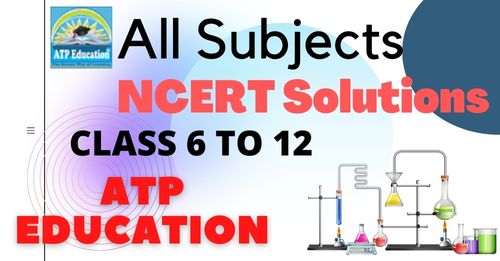1. Nutrition In Plants Science Class 7 In English Medium Ncert Book Solutions Text-book Questions (Exercise)
1. Nutrition in Plants : Text-book Questions (Exercise) Science class 7th:English Medium NCERT Book Solutions
NCERT Books Subjects for class 7th Hindi Medium
Chapter 1. Nutrition in Plants Text-book Questions (Exercise): NCERT Book Solutions for class 7th. All solutions and extra or additional solved questions for 1. Nutrition in Plants : Text-book Questions (Exercise) Science class 7th:English Medium NCERT Book Solutions.. All ncert books and cbse syllabus are solved chapter by chapter and also exercise within chapter and exercise solved by our expert in Hindi and English Medium for studends.
NCERT books solved questions and answers 1. Nutrition in Plants, 1. Nutrition in Plants solved questions and answers, 1. Nutrition in Plants in english Medium, NCERT Book Solutions for 7 Science, chapter and excercise for Science-Text-book Questions (Exercise), NCERT Book Solutions for class 7th, Science, Science class 7th, class 7th Science, All solutions and extra or additional solved questions for 1. Nutrition in Plants, Science 1. Nutrition in Plants, Text-book Questions (Exercise), Science class 7th, English Medium NCERT Book Solutions
1. Nutrition in Plants
Text-book Questions (Exercise)
Exercise (NCERT Text Book) Chapter -1
Q1. – Why do organisms need to take food?
Ans – Organisms need food to
(i) Get energy to do work.
(ii) Build up body .
(iii) Repair damages in the body.
(iv) Maintain the functions of the body.
Q2. – Distinguish between a parasite and a saprotroph.
Ans. – Parasite:
(i) It gets nutrients from host on which they live.
(ii) It lives on or in the host.
(iii) Ex: Cuscuta
Saprotroph : -
(i) It gets nutrient from dead and decaying matter.
(ii) It lives on dead or decaying stuff.
(iii) Ex: Bacteria and fungi.
Q3. – How would you test the presence of starch in leaves?
Ans : When iodine comes in contact with starch, a dark blue colour appears. Testing the presence of starch in leaves, when we dropped some solution of iodine on leaves they give dark blue colour. Thus we can say there is starch in leaves.
Q4. – Give a brief description of the process of synthesis of food in green plants.
Ans : the process of synthesis of food in green plants is called photosynthesis, in which green palnts synthesise their food using carbon dioxide and water in presence of chlorophyll and sunlight. This process takes place in leaves. The products of photosynthesis are carbohydrate and oxygen. The equation of this process is
 Q5. – Show with the help of a sketch that the plants are the ultimate source of food.
Q5. – Show with the help of a sketch that the plants are the ultimate source of food.
Ans :
Q6. – Fill in the blanks:
(a) Green plants are called _________________ since they synthesise their own food.
(b) The food synthesised by the plants is stored as _________________.
(c) In photosynthesis solar energy is captured by the pigment called ___________.
(d) During photosynthesis plants take in ______________________ and release __________________.
Ans:
(a) Autotrophs
(b) Starch
(c) Chlorophyll
(d) carbon dioxide and water, carbohydrate and oxygen.
Q7. – Name the following:
(i) A parasitic plant with yellow, slender and tubular stem.
Ans : cuscuta (Amarbel)
(ii) A plant that has both autotrophic and heterotrophic mode of nutrition.
Ans : Pitcher plant
(iii) The pores through which leaves exchange gases.
Ans : Stomata
Q8. – Tick the correct answer:
(a) Amarbel is an example of:
(i) autotroph
(ii) parasite
(iii) saprotroph
(iv) host
Ans : (ii) Parasite
(b) The plant which traps and feeds on insects is:
(i) cuscuta
(ii) china rose
(iv) pitcher plant
(iv) rose
Ans : (iv) pitcher plant
Q9. – Match the items given in Column I with those in Column II:
Column I Column II
Chlorophyll Bacteria
Nitrogen Heterotrophs
Amarbel Pitcher plant
Animals Leaf
Insects Parasite
Ans :
Column I Column II
Chlorophyll Leaf
Nitrogen Bacteria
Amarbel Parasite
Animals Heterotrophs
Insects pitcher plant
Q10. – Mark ‘T’ if the statement is true and ‘F’ if it is false:
(i) Carbon dioxide is released during photosynthesis. (T/F)
(ii) Plants which synthesise their food themselves are called saprotrophs. (T/F)
(iii) The product of photosynthesis is not a protein. (T/F)
(iv) Solar energy is converted into chemical energy during photosynthesis. (T/F)
Ans :
(i) F
(ii) F
(iii) T
(iv) T
Q11. – Choose the correct option from the following:
Which part of the plant gets carbon dioxide from the air for photosynthesis.
(i) root hair (ii) stomata (iii) leaf veins (iv) sepals
Ans : (ii) stomata
Q12. – Choose the correct option from the following:
Plants take carbon dioxide from the atmosphere mainly through their:
(i) roots (ii) stem (iii) flowers (iv) leaves
Ans : (iv) leaves
ATP Educationwww.atpeducation.com ATP Education www.atpeducation.com
ATP Education
See other sub-topics of this chapter:
1. Chapter Review class 7 Chap-1. Nutrition in Plants
2. Text-book Questions (Exercise) class 7 Chap-1. Nutrition in Plants
3. Additional Short Answered questions class 7 Chap-1. Nutrition in Plants
4. Additional long-Answered Questions class 7 Chap-1. Nutrition in Plants
Advertisement
NCERT Solutions
Select Class for NCERT Books Solutions
Notes And NCERT Solutions
Our NCERT Solution and CBSE Notes are prepared for Term 1 and Terms 2 exams also Board exam Preparation.
Science Chapter List
1. Nutrition in Plants
2. Nutrition in Animals
3. Fibre to Fabric
4. Heat
5. Acids, Bases and Salts
6. Physical and Chemical Changes
7. Weather, Climate and Adaptations of Animals to Climate
8. Winds, Storms and Cyclones
9. Soil
10. Respiration in Organisms
11. Transportation in Animals and Plants
12. Reproduction in Plants
13. Motion and Time
14. Electric Current and its Effects
15. Light
16. Water : A Precious Resource
17. Forests: Our Lifeline
18. Wastewater Story


